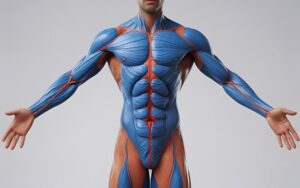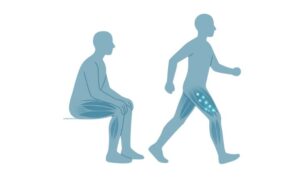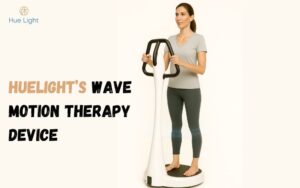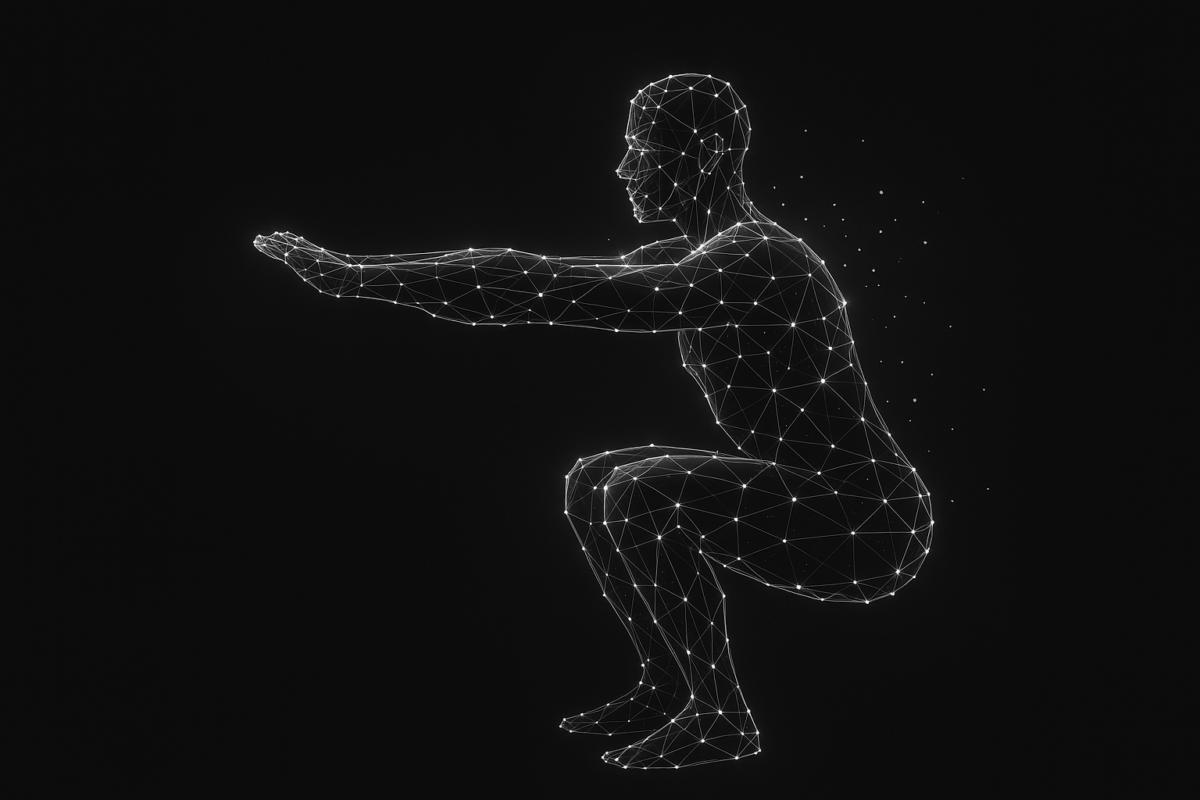Exercise benefits both the body and mind. It boosts your mood, strengthens muscles, and lowers the risk of chronic diseases.
Here’s a fascinating fact: When you exercise, your muscles act like tiny factories, releasing special hormones called myokines. These powerful molecules play a crucial role in maintaining your health in various ways.
But what if you can’t exercise? Whether due to injury, illness, or ageing, many people face barriers to staying physically active. The good news? Emerging research shows there are alternative ways to stimulate the production of myokines—without hitting the gym.
In this article, we’ll explore what myokines are, why they matter, and how you can safely activate them, even without traditional exercise.
What Are Myokines?

Myokines are specialized proteins produced by muscle cells during physical activity, especially exercise. When muscles contract, they release these proteins into the bloodstream. Once in circulation, myokines act as signaling molecules, sending messages to various organs, including the brain, liver, heart, fat tissue, and immune system.
Unlike traditional hormones, which are secreted by glands, myokines are unique in that they originate directly from skeletal muscle. This makes them a crucial link between physical activity and whole-body health.
Myokines function as molecular messengers. After being released into the blood, they interact with different organs to regulate vital processes such as energy metabolism, inflammation control, and disease prevention. For instance, certain myokines help the liver regulate blood sugar, support cardiovascular health, and reduce systemic inflammation.
Key Myokines and Their Functions
Skeletal muscles produce a variety of myokines, each with distinct roles in maintaining metabolic and systemic health. Here are some of the most well-researched myokines and what they do:
- Irisin – Commonly referred to as the “exercise hormone,” irisin facilitates the conversion of white adipose tissue into metabolically active brown fat. This transformation increases energy expenditure and supports improved metabolic function.
- Interleukin-6 (IL-6) – Although IL-6 is traditionally associated with inflammation, its role shifts when secreted by contracting muscles. In this context, it supports lipolysis (fat breakdown), enhances glucose metabolism, and acts as an anti-inflammatory agent.
- Brain-Derived Neurotrophic Factor (BDNF) –BDNF plays a critical role in neuroplasticity. It supports cognitive function, enhances mood, and promotes the growth and survival of neurons, linking muscle activity directly to brain health.
- Myostatin – A well-known regulator of muscle mass, myostatin inhibits excessive muscle growth. Reduced levels of this myokine are associated with increased muscle hypertrophy.
- Fibroblast Growth Factor 21 (FGF21) – FGF21 enhances insulin sensitivity, supports lipid metabolism, and contributes to energy balance, making it a key player in metabolic regulation.
These myokines function like a molecular orchestra, translating physical activity into wide-ranging benefits that extend beyond the musculoskeletal system.
Health Benefits of Myokines
Activating myokines triggers a wide range of health benefits that extend well beyond physical fitness:
- Enhances Metabolic Function: Myokines regulate glucose and fat metabolism, lowering the risk of type 2 diabetes and obesity.
- Reduces Inflammation: Several myokines combat chronic, low-grade inflammation—a root cause of heart disease, Alzheimer’s, and other degenerative conditions.
- Protects Brain Health: Myokines like BDNF support cognitive function, memory, learning, and emotional well-being.
- Preserves Muscle Mass: These molecules prevent muscle wasting, especially crucial for aging individuals or those with sedentary lifestyles.
- Boosts Immune Defense: Certain myokines enhance immune system surveillance, helping detect and eliminate pathogens and abnormal cells, including cancer.
Traditional Role of Exercise in Myokine Activation

The primary trigger for myokine release is muscle contraction—in other words, movement. Resistance training, aerobic workouts, and even light activities like walking or stretching can stimulate myokine production.
The more frequently and intensely you move, the more myokines your muscles release. This is why regular physical activity is regarded as one of the most powerful strategies for disease prevention and healthy aging.
But what happens when exercise isn’t possible?
Why Activate Myokines Without Exercise?
While exercise remains the gold standard for myokine activation, not everyone can maintain a consistent fitness routine. That doesn’t mean they should miss out on the health benefits.
Activating myokines without exercise opens doors for those often left behind by conventional health advice. It provides a science-backed way to support health, manage chronic conditions, and enhance quality of life without overstraining the body.
There are several real-world scenarios where exercise isn’t possible or safe:
1. Chronic Illness or Injury
Living with conditions like multiple sclerosis, fibromyalgia, or recovering from surgery can make even the gentlest movements feel painful or risky. In these cases, activating healing pathways without physical strain becomes essential. Myokine stimulation offers a way to support recovery without aggravating symptoms.
2. Physical Disability
For individuals with paralysis or limited mobility, traditional exercise may simply not be possible. But that doesn’t mean the benefits of muscle activation are out of reach. Alternative approaches can safely deliver similar physiological effects without requiring movement.
3. Aging and Frailty
As we age, we naturally lose muscle mass (sarcopenia) and endurance. This decline not only affects strength but also increases inflammation and weakens cognitive health. Stimulating myokines can help counteract these effects without the need for strenuous activity.
4. Lifestyle Constraints
Maybe it’s a demanding job, caregiving duties, or lack of access to a gym. Life gets busy. And when exercise gets pushed to the side, so do its benefits. That’s where passive muscle activation becomes a powerful tool for modern life.
So, are you supposed to just give up on the benefits of movement?
Not anymore.
Even without lifting a finger, your muscles can still be activated, and your body can still respond.
Here’s where science steps in with a solution. Technology now makes it possible to stimulate muscles and trigger key physiological responses without the need for traditional workouts.
That’s exactly what the WaveMotion Exercise Device is designed to do:
- Delivers subtle, rhythmic vibration across your body
- Triggers micro-contractions in muscles
- Boosts circulation and metabolic activity
- Encourages myokine release from muscle cells
In other words: your body reacts like it’s exercising—even when it’s not.
Wave Motion Therapy Device

WaveMotion is a next-generation therapy device built on the fusion of Ultrasound and PEMF (Pulsed Electromagnetic Field) technologies. Rooted in research from functional medicine and human physiology, WaveMotion harmonizes with the body’s natural frequencies to deliver low-impact, targeted stimulation that:
- Activates deep muscle fibers
- Enhances blood circulation
- Supports cellular function
- Stimulates capillaries and connective tissue systems
This gentle yet systemic bio-stimulation creates optimal conditions for the release of bio-signaling molecules such as myokines without traditional muscle exertion.
Who is WaveMotion made for?
While WaveMotion is not a replacement for exercise, it provides an effective alternative to stimulate muscle activity and cellular signaling, particularly beneficial for:
- Individuals with limited mobility or chronic fatigue
- Middle-aged and older adults seeking low-impact health solutions
- Busy professionals or entrepreneurs looking for advanced wellness tech
- Anyone interested in passive health support at home
This isn’t exercise, but it mimics its effects.
WaveMotion stimulates the body’s natural healing messengers, triggering a similar biological response to traditional workouts without physical strain.
Conclusion
Exercise has long been the gold standard for enhancing health, but it’s not always accessible to everyone. The good news is that you no longer need traditional workouts to activate your body’s powerful, healing myokines.
With cutting-edge technologies like the WaveMotion Device, individuals facing limited mobility, chronic conditions, or demanding lifestyles can now access many of the same physiological benefits that exercise provides.
WaveMotion isn’t just a passive tool. It’s an intelligent, science-backed solution. By combining Ultrasound and PEMF technologies, it gently stimulates deep muscle fibers, enhances circulation, and triggers the release of key myokines—all without physical exertion.
Perfect for older adults, busy professionals, or anyone seeking a low-impact way to support their well-being, WaveMotion offers a new path to health that aligns with modern needs.
Ready to unlock your body’s natural healing power without lifting a finger?
Click here to order your WaveMotion Device today.














